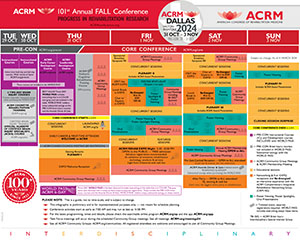
mohanraj Thirumalai, PhD
associate professor
University of Alabama Birmingham Marnix E. Heersink School of Medicine
OMB No. 0925-0001 and 0925-0002 (Rev. 10/2021 Approved Through 09/30/2024)
BIOGRAPHICAL SKETCH
Provide the following information for the Senior/key personnel and other significant contributors.
Follow this format for each person. DO NOT EXCEED FIVE PAGES.
NAME: Thirumalai, Mohanraj
eRA COMMONS USER NAME (credential, e.g., agency login): MTHIRU1
POSITION TITLE: Assistant Professor
EDUCATION/TRAINING (Begin with baccalaureate or other initial professional education, such as nursing, include postdoctoral training and residency training if applicable. Add/delete rows as necessary.)
INSTITUTION AND LOCATION DEGREE
(if applicable)
Completion Date
MM/YYYY
FIELD OF STUDY
University of Madras, India B.Eng. 05/1999 Electrical & Electronics Engineering
University of Illinois at Chicago, Chicago, IL M.S. 05/2003 Electronics and Computer Engineering
University of Illinois at Chicago, Chicago, IL M.Eng. 12/2009 Bio Engineering
University of Illinois at Chicago, Chicago, IL Ph.D 05/2016 Management and Information Systems
A. Personal Statement
I currently serve as the PI on two projects funded by the National Institute on Disability, Independent Living, and Rehabilitation Research (NIDILRR - 90IFDV0013 and 90DPGE0017) and one R01 from the National Institutes of Health (NIH R01DK129378). Since 2002, I have been involved with the the Rehabilitation Engineering Research Center, RecTech (rectech.org) in different capacities and in the current cycle (ending 2022) I serve as the Co-PI and Director of ICT (PI – Dr. Jim Rimmer). In the proposed cycle, I and Dr.Rimmer are switching roles, with he becoming the Co-PI and I as the PI. Over the last five years, I have been deeply involved in all operations of the center at a day-to-day level and thus comes this transition. Dr. Rimmer will continue to provide his expertise and mentorship as a Co-PI. I also serve as the Director of ICT for the National Center on Health, Physical Activity and Disability (NCHPAD, nchpad.org).
All my research projects in which I serve as a PI, Co-PI or Co-I heavily rely on technologies. Over the past 22 years I have built several technology driven interventions that have had impact beyond research settings. For instance, some of the technologies I built in response to the Covid-19 pandemic were instrumental in reopening of about 40 universities and are still used in many universities. The first online health promotion program for people with disabilities launched by me in 2011 through NCHPAD has been used by more than 60,000 people. Both of these examples are beyond the traditional research settings.
I have worked extensively with most of the team members and partners in the proposed work and looking forward to continuing our highly impactful work.
Ongoing projects I would like to highlight include:
90REGE0002-01-00 10/1/2017 - 9/30/2022
Administration for Community Living/DHHS/NIDILRR
Rehabilitation Engineering Research Center on Interactive Exercise Technologies and Exercise Physiology Benefiting Persons with Disabilities.
The Center addresses access to recreation and exercise using telehealth, virtual reality and other forms of technology in adults with physical disabilities.
Role: Co-PI/Co-Director and Director of ICT
90DPGE0017 9/1/2020 - 8/30/2023
Administration for Community Living/DHHS/NIDILRR
AI4CHRON – An Accessible and Inclusive Artificial Intelligence Assisted Chronic Disease Self-Management Telehealth Platform.
The goal of this project is to create a comprehensive telehealth platform for PWD for chronic disease self-management.
Role: Principal Investigator
90IFDV0013 10/1/2019 - 9/30/2022
Administration for Community Living/DHHS/NIDILRR
Artificial Intelligence Assisted Inclusive Diabetes Telecoaching Self-Management Program.
The goal of this project is to create the first ever online diabetes self-management program for people with disabilities that is accessible, inclusive, scalable and sustainable.
Role: Principal Investigator
NIH/NIDDK R01DK129378-01 9/6/2021 - 7/31/2024
Gamified Optimized Diabetes-management with AI powered Rural Telehealth (GODART).
The purpose of this study is to pilot and assess feasibility of implementing an artificial intelligence assisted individualized lifestyle modification intervention for glycemic control in rural populations that can delivered even over a regular landline phone service. This study will provide us knowledge to plan a well powered optimization trial in future to develop an optimal (low cost) intervention package that can be delivered in a sustainable manner to the rural portions of America.
Role: Principal Investigator (Contact PI)
Four relevant publications:
Wilroy, J., Lai, B., Currie, B., Young, H., Thirumalai, M., Mehta, T., Giannone, J., Rimmer, JH. (2021). Teleassessments for Enrollment of Adults with Physical/Mobility Disability in a Home-based Exercise Trial in Response to COVID-19: A Feasibility Study. JMIR Formative Research.
Young, H. J., Mehta, T., Kim, Y., Padalabalanarayanan, S., Chiu, C. Y., Rimmer, J. H., & Thirumalai, M. (2021). The Spinal Cord Injury Program in Exercise (SCIPE) study: study protocol for a randomized controlled trial evaluating teleexercise programs for people with spinal cord injury. Trials, 22(1), 1-11.
Barstow, B., Thirumalai, M., Mehta, T., Padalabalanarayanan, S., Kim, Y., & Motl, R. W. (2020). Developing a decision support system for exercise engagement among individuals with conditions causing mobility impairment: Perspectives of fitness facility fitness exercisers and adapted fitness center trainer. Technology and Disability, 1-11. doi: 10.3233/TAD-200265
Rimmer, J. H., Mehta, T., Wilroy, J., Lai, B., Young, H. J., Kim, Y., . . . Thirumalai, M. (2019). Rationale and design of a Scale-Up Project Evaluating Responsiveness to Home Exercise and Lifestyle Tele-Health (SUPER-HEALTH) in people with physical/mobility disabilities: A type 1 hybrid design effectiveness trial. BMJ Open, 9(3). doi:10.1136/bmjopen-2018-023538
B. Positions and Honors
Positions and Employment
October 2016 – Present Director of ICT, UAB/Lakeshore Research Collaborative, Birmingham, AL
October 2016 – Present Assistant Professor, University of Alabama, Birmingham, AL
August 2012 – September 2016 Information Systems Manager, University of Alabama, Birmingham, AL
October 2006 – July 2012 Senior Network Analyst, University of Illinois, Chicago, IL
June 2003 – September 2006 Network Analyst, University of Illinois, Chicago, IL
August 2000 – May 2003 Graduate Assistant, University of Illinois, Chicago, IL
Selected Honors
UAB Nutrition Obesity Research Center’s “Creativity is a Decision” Award for 2017
UAB Bill L. Harbert Institute for Innovation and Entrepreneurship’s Faculty Innovator Award for 2020
UAB Faculty Senate’s Distinguished Service Award for 2020
Adhoc Journal Reviews
Disability and Health Journal
Journal of Medical Internet Research
JMIR Research Protocols
BMJ Open
JMIR Formative Research
Health Systems
JMIR Human Factors
Clinical Obesity
Grant Review Panels
HHS/ACL/NIDILRR
Field Initiated Proposals Grant Review Panel 2022, 2021, 2020, 2017
RERC on Wireless Technologies Grant Review Panel 2021
DRRP on Community Living Grant Review Panel 2022, 2020
DRRP on Assistive Technology to Promote Independence and Community Living Grant Review Panel 2019
RERC on Information and Communication Technologies Access Grant Review Panel 2019
SBIR Phase I Grant Review Panel 2018, 2017
RERC on Universal Access to Information Technology Grant Review Panel 2018
DRRP on Community Living Grant Review Panel 2018
SBIR Phase II Grant Review Panel 2017
NSF SBIR/STIR
Personalized Software Systems Grant Review Panel 2020
Eng/IIP Grant Review Panel 2022, 2020
Other Experiences and Memberships
Member, Advisory Panel for RERC on ICT Access – mRehab 2020-present
Member, Advisory Council for LiveWell App Factory 2020-present
Co-Chair, ACRM Programming Task Force of Technology Networking Group (TRNG) 2020-2021
C. Contribution to Science
1. Telehealth Intervention Development
Telehealth is a proven, cost-effective strategy to help people improve their health and function at the comform of peoples homes. Over the years, I have focused on the launch of large scale intervention studies that use telehealth interventions.
a) Rimmer, J. H., Thirumalai, M., Young, H. J., Pekmezi, D., Tracy, T., Riser, E., & Mehta, T. (2018). Rationale and design of the tele-exercise and multiple sclerosis (TEAMS) study: A comparative effectiveness trial between a clinic- and home-based telerehabilitation intervention for adults with multiple sclerosis (MS) living in the deep south. Contemporary Clinical Trials, 71, 186-193. doi:10.1016/j.cct.2018.05.016
b) Rimmer, J. H., Mehta, T., Wilroy, J., Lai, B., Young, H. J., Kim, Y., . . . Thirumalai, M. (2019). Rationale and design of a Scale-Up Project Evaluating Responsiveness to Home Exercise and Lifestyle Tele-Health (SUPER-HEALTH) in people with physical/mobility disabilities: A type 1 hybrid design effectiveness trial. BMJ Open, 9(3). doi:10.1136/bmjopen-2018-023538
c) Evans, E., Zengul, A., Hall, A., Qu, H., Willig, A., Cherrington, A., & Thirumalai, M. (2021). Disability-inclusive diabetes self-management telehealth program: protocol for a pilot and feasibility study. JMIR Research Protocols, 10(9), e31689.
2. User-centered Technologies
Design of technology in a manner that promotes usability and acceptance is a science by itself. In my journey as a faculty member, I teach a course on applying the user-centered design methodology on Health Informatics technology development. All of the technologies I have developed for the interventions also use the same user-centered design approach.
a) Thirumalai, M., Rimmer, J. H., Johnson, G., Wilroy, J., Young, H. J., Mehta, T., & Lai, B. (2018). Teams (Tele-exercise and multiple sclerosis), a tailored telerehabilitation mhealth app: Participant-centered development and usability study. JMIR mHealth and uHealth, 6(5). doi:10.2196/10181
b) Lai, B., Wilroy, J., Young, H. J., Howell, J., Rimmer, J. H., Mehta, T., & Thirumalai, M. (2019). A mobile app to promote adapted exercise and social networking for people with physical disabilities: Usability study. Journal of Medical Internet Research, 21(3). doi:10.2196/11689
c) Thirumalai, M., Neal, N., Niranjan, S., Townsend, S., Powell, MA., Neal, W., Schleicher, EA., Raparla, V., Oster, RA., Demark-Wahnefried, W., Pekmezi, D. (2021). Interactive Voice Response System to Increase Physical Activity and Prevent Cancer in the Rural Alabama Black Belt: Design and Usability. JMIR Human Factors. doi: 10.2196/29494
3. Telehealth without Internet for Rural Populations
While telehealth is impactful as a health service delivery model, there is a significant portion of the population that cannot access the internet due to various factors such as lack of connectivity, hardware availability, lack of skills to use modern technology etc. To overcome these barriers and yet reach people at the convenience of their homes, I have focused on Interactive Voice Response (IVR) technologies. Any traditional (landline), smart or non-smart mobile phone can be used with this technology. All the bleeding edge technologies such as machine learning, natural language processing etc., are then used on the other end (servers) to bring the latest innovations to people’s homes.
a) Thirumalai, M., Neal, N., Niranjan, S., Townsend, S., Powell, MA., Neal, W., Schleicher, EA., Raparla, V., Oster, RA., Demark-Wahnefried, W., Pekmezi, D. (2021). Interactive Voice Response System to Increase Physical Activity and Prevent Cancer in the Rural Alabama Black Belt: Design and Usability. JMIR Human Factors. doi: 10.2196/29494
b) Brown, N. I., Powell, M. A., Baskin, M., Oster, R., Demark-Wahnefried, W., Hardy, C., ... & Pekmezi, D. (2021). Design and Rationale for the Deep South Interactive Voice Response System–Supported Active Lifestyle Study: Protocol for a Randomized Controlled Trial. JMIR Research Protocols, 10(5), e29245.
c) Ainsworth MC, Rogers LQ, Perumean-Chaney SE, Thirumalai M, Brown N; Jackson, EA., Demark-Wahnefried W, Pekmezi D. Effects of Interactive Voice Response (IVR) Counseling on Physical Activity Benefits and Barriers. Health Behavior and Policy Review. 2020 Oct;7(5):407-415(9). doi: 10.14485/HBPR.7.5.3
Complete List of Published Work in MyBibliography:
https://www.ncbi.nlm.nih.gov/myncbi/mohanraj.thirumalai.1/bibliography/public/
Poster(s):
-
Friday, November 1, 20243:00 PM - 3:15 PM

.jpg)
.jpg)
.jpg)
